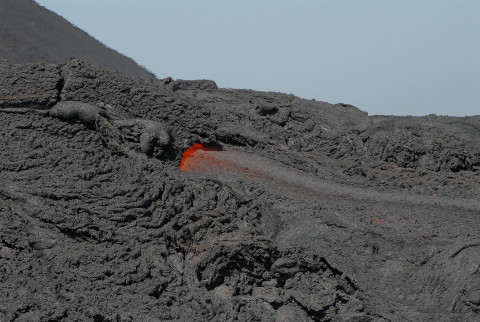EOSC 321 · Igneous Petrology

The origin and formation of igneous rocks. [2-3-0] Prerequisite: EOSC 221.
Syllabus
Learning Goals
- Describe, classify, and correctly name igneous rocks based on field and lab data.
These include the morphology of the body, observations on the field relationship of the rock, the macroscopic texture of the rock, shapes and sizes of minerals in thin sections, correct identification of minerals in the rock. - Interpret the origin and formation of igneous rocks.
These include the tectonic setting necessary to produce the magma, the thermal regime and the depth of magma generation.
Instructors
Maya Kopylova
Textbook
Lecture - John Winter "An introduction to Igneous and metamorphic petrology", 2001
https://www.academia.edu/3664233/An_Introduction_to_Igneous_and_Metamorphic_Petrology_Winter
Lecture Topics
| Lecture | Topic |
|---|---|
| 1 | Introduction |
| 2 | Overview |
| 3 | Chemical classification of igneous rocks |
| 5 | Interpretation of fabric |
| 6 | Binary Systems |
| 7 | Binary Peritectic Systems |
| 8 | Mineral zoning |
| 9 | Ternary Systems |
| 10 | Application of phase diagrams to melting and crystallization |
| 11 | Mantle petrology |
| 12 | Melting |
| 13 | Batch melting |
| 14 | Tholeiitic and Alkaline magmatism Basalts as examples of mantle magmas |
| 15 | Major Element Chemistry Interpretation |
| 16 | Trace Element Chemistry. Rare Earth Elements |
| 17 | Mid-term |
| 18 | Isotopes as Petrogenetic Indicators |
| 19 | Tectono-magmatic associations. Mid-ocean ridge basalts |
| 20 | Ocean island basalts |
| 21 | Continental flood basalts and Large Igneous Provinces |
| 22 | Magmatism of continental rifts |
| 23 | Carbonatites and kimberlites |
| 24 | Magmatism of Subduction zones: island arcs |
| 25 | Magmatism of Subduction zones: continental arcs |
| 26 | Students' presentations |
| 27 | Students' presentations |
Labs
| Week | Topic |
|---|---|
| 1 | No Lab |
| 2 | Lab 1: Review of optical properties of minerals. Ultramafic rocks |
| 3 | Lab 2: Mafic and Intermediate plutonic rocks |
| 4 | Lab 3: Felsic and intermediate plutonic rocks |
| 5 | No Lab - Public holiday |
| 6 | Lab 4: Mafic volcanic rocks |
| 7 | No Lab - Public holiday |
| 8 | Lab 5: Conoscopy. Felsic plutonic rocks |
| 9 | Lab 6: Intermediate and Felsic volcanic rocks |
| 10 | Lab 7: Alkaline rocks |
| 11 | No Lab - Mid-term break |
| 12 | Work on group projects |
| 13 | Lab 8: Kimberlites, lamprophyres and carbonatites |
| 14 | Lab Exam |
Course Content
The theoretical component of the course includes two one-hour theory classes per week, focusing on the interpretation of phase diagrams, geochemical data, thermodynamics, and tectono-magmatic associations. Most lectures include one or two breaks where students practice the new material on worksheets to facilitate questions. After each lecture, students complete short online quizzes to reinforce their understanding. The practical aspect of the course comprises nine three-hour labs focused on optical petrographic microscopy, accounting for 40% of the final grade. Students examine approximately 150 thin sections from fully-described reference collections, test their knowledge with independent assignments, and receive feedback by the next lab session. Each student has access to their own microscope for the duration of the course, and the reference collections are available for additional study outside lab hours. A group project integrates the laboratory and theoretical components of the course, challenging students to deduce the tectonic origin of a rock suite and defend their conclusions before their peers.